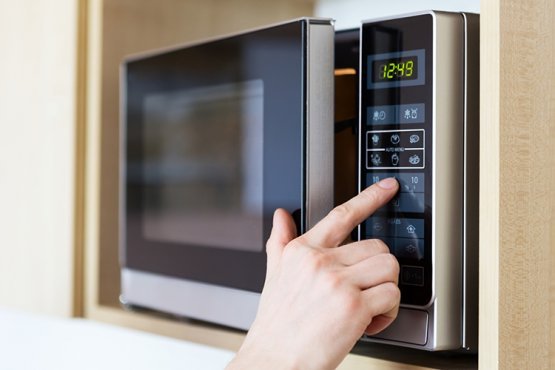Microwave cooking

 Cooking in a microwave oven is quick and easy. (Photo by: rsedlacek / Depositphotos)
Cooking in a microwave oven is quick and easy. (Photo by: rsedlacek / Depositphotos)Levels of power and their use
Microwave ovens are usually equipped with different power levels that can be used for various kitchen activities:
- The low levels (usually 90-180 watts) are best for thawing.
- The middle settings (usually 300-400 watts) are ideal for cooking or reheating dishes.
- The actual cooking with the microwave takes place in the range of the higher power levels, i.e. 500-700 watts or even more. They can be used to quickly heat up cooking or liquids.
But don’t forget: a microwave oven is “only” an addition to a conventional stove or oven, not a replacement. As a rule, no additional water or fat needs to be added to the food if it is being prepared in the microwave. On the contrary. The microwave is boiling low in fat and vitamins.
Tip: Always add salt only after the end of the cooking time, as salt removes water from the food. As a rule of thumb, the more water a food contains, the more suitable it is for the microwave.
 Vegetables in particular can be cooked very well in the microwave. (Photo by: belchonock / Depositphotos)
Vegetables in particular can be cooked very well in the microwave. (Photo by: belchonock / Depositphotos)But be careful with “locked in” water, because this causes food to burst, as water expands when heated – so always scratch tomatoes, for example.
Vegetables are generally only cooked with the drained water from washing, i.e. in their own juice.
Meat in the microwave
In contrast to beef and game, which can be tough in the microwave, pork, poultry and fish are good microwave candidates.
The same applies here: Everything is cooked without fat or water.
Interesting facts and tips
Food ingredients such as vitamins and nutrients behave no differently when using microwaves than when they are heated in any other way (saucepan / pan, grill, oven) – here and there, too much and too long heat means loss of vitamins, for example.
It should be noted that microwaves only have a thermal effect. They are converted into heat in food, i.e. in vegetables, meat or rice, etc. However, when used correctly, temperatures are just as high or low as with conventional preparation methods.
And even if it is mentioned again and again: No other “substances” are created than, for example, when cooking in a saucepan. The electromagnetic waves are just another form of heat supply, nothing else.
It is more important to keep an eye on whether the power consumption is proportionate and, above all, that correct microwave dishes are used. Because: With “normal” plastic dishes, carcinogenic plasticizers could be released.





